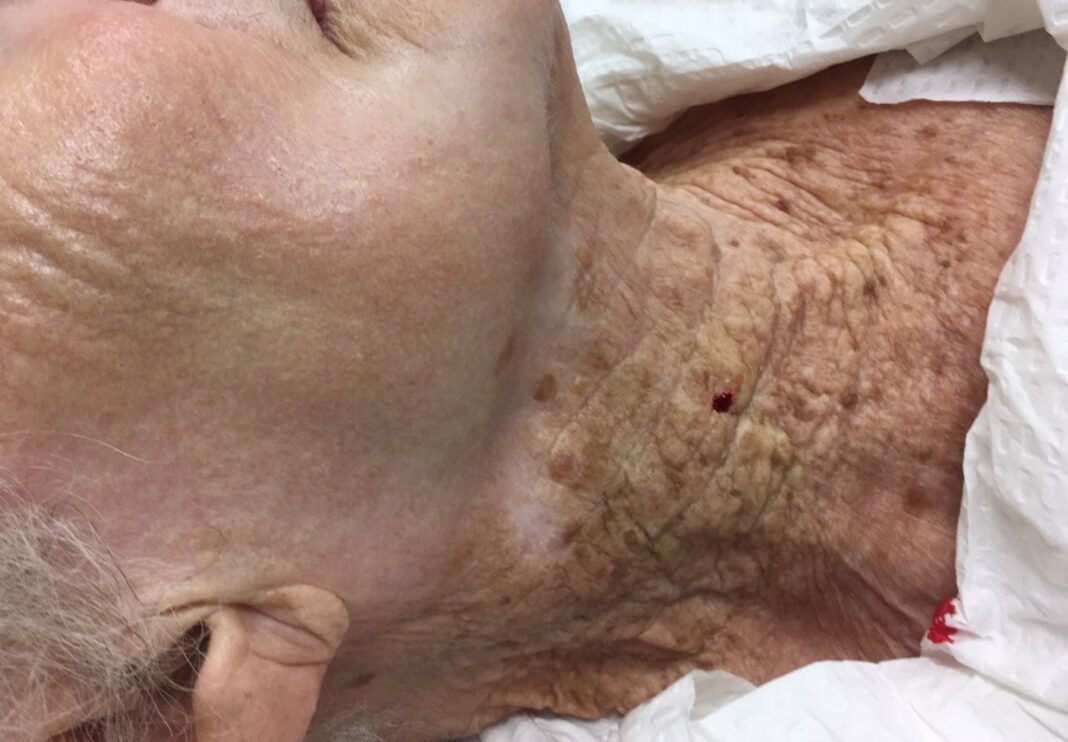The sun’s rays are important, but excessive exposure to UV rays can have a disastrous effect on the skin. UV radiation can damage our cells and lead to skin cancer. The only effective protection is covering with clothing and means with a UV filter. Excessive exposure to UV radiation causes DNA damage. A young person’s body can repair such damage. As we age, the body’s ability to respond to DNA damage decreases.
Brutal damage to the skin by UV radiation
Although people look old at an advanced age, UV radiation can accelerate the aging of the skin. Aging caused by excessive exposure to the sun is called photoaging. This image shows how important it is to use UV protection on the entire area of skin that is exposed to the sun. The image was published to the Journal of The European Academy of Dermatology and Venereology and shows the face and neck of a 92-year-old who reportedly used UV-protective moisturizer on her face but not her neck.

UV radiation and aging
It is important to use UV protection on all parts of the body that are not covered. If UV protection is only applied to some parts of the body, other parts of the body will look older. Old looking skin is not the only downside, sunlight can also cause DNA damage in skin cells. A large accumulation of skin cells with damaged DNA can lead to genetic mutations and the development of cancer. This is why overexposure to the sun often causes cancer as we age.
Dr Christian Posch, a specialist in skin cancer research, argues that the parallels between aging and cancer risk demonstrate that if we treat the signs of aging we can, arguably, also reduce the risk of disease.
“While it is unlikely that we can (or even should) aim at defeating human aging for various reasons, modifiers of aging will still be able to change both health span (the time we live without disease) and lifespan,” writes Posch. “After all, who would not agree to an additional 20–40 healthy years?”
“Such advancements will be realized by a significant reduction of age-related diseases including the prevention of cancers. Why? Because there is substantial overlap between the hallmarks of cancer and the hallmarks of aging. Thus, addressing biological changes of aging will also address prerequisites of cancerogenesis.”
When in the sun, consider applying sunscreen to all parts of your body that are exposed to the sun. This will reduce your risk of cancer and prevent certain parts of your entire body from looking older.
Source:
https://onlinelibrary.wiley.com/doi/full/10.1111/jdv.17660
Image credit: C Posch















